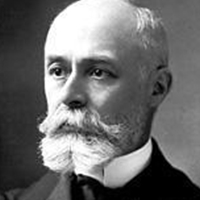Eduardo Torroja
Eduardo Torroja y Miret, was a Spanish structural engineer and a pioneer in the design of concrete shell structures.
Eduardo Torroja, in full Eduardo Torroja y Miret, a Spanish architect and engineer notable as a pioneer in the design of concrete-shell structures.Torroja was born in Madrid where he studied civil engineering.
In 1923 Torroja began work for the Hidrocivil company, headed by the engineer José Eugenio Ribera. He planned and directed various types of projects, including the foundations of bridge piers, bridges, water supply and sanitation works, and various urban buildings. Torroja’s first large project was the Tempul cable-stayed aqueduct (1926) in Guadalete, Jerez de la Frontera, in which he used pre-stressed girders In 1928 he established his own office
He became a consulting engineer in 1927. His first concrete-shell structure, a covered market in Algeciras (1933), was followed two years later by two of his most admired shell structures, both in Madrid: the grandstand at the Zarzuela racecourse and the sports hall. The shell roof of the racecourse cantilevers out some 43 feet (13 metres). Double cylindrical shells characterize the sports hall.
Other outstanding works by Torroja include a reservoir in Madrid (1936), the Aldoz aqueduct (1939), the bridge over the Esla at Zamora (1940), hangars at Torrejón de Ardoz (1942), the Las Corts football (soccer) stadium, Barcelona (1943), and the Táchira Club, Caracas (1957). His churches at Xerrallo and Pont de Suert (both 1952) also show his flair for dramatic and graceful form. In 1951 he formed the Technical Institute of Construction and Cement, and he served as its director until his death.

Eduardo Torroja
Date of Birth: 27 Aug 1899
Birth Place: Madrid, Spain
Proffession: Spanish structural engineer
Nationality: Spain
Death: 15 June 1961, Madrid, Spain


